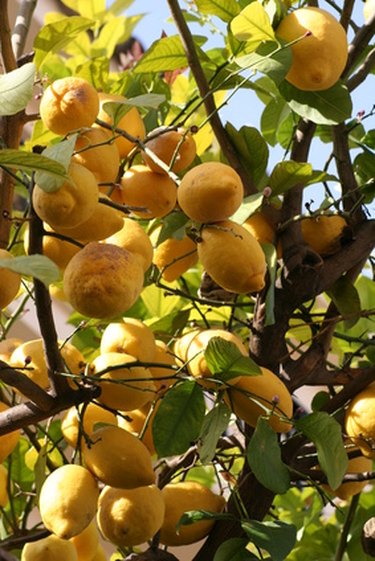
Citrus trees require specific fertilizers to provide needed nutrients in the correct balance. While they need common nutrients such as nitrogen, potassium and phosphorus, they also require boron, zinc and magnesium. Using a standard fertilizer often won't do the job. Not only that, but feeding amounts and schedules vary depending on a tree's age and stage of development. Knowing when and how to fertilize your citrus tree will help you keep it healthy and get the most out of it.
Young Trees
Video of the Day
Citrus trees need to be fertilized more often within their first year of planting than they do afterward. Fertilization at this point helps them establish root systems so they can pull in nutrients from the soil. Begin fertilizing your trees in March and use a pound of fertilizer per tree until October. It also helps to spray your trees with a nutrional citrus spray once a month from February to October. This practice should continue into the maturity of the tree.
Video of the Day
Fruiting Trees
Trees that are bearing fruit must be fertilized before they begin to bloom. Fertilizing a blooming tree will cause the buds to fall off, so fertilizer before the tree begins to bloom, generally in late February or early March. Fertilize again after the fruits have emerged and grown to around the size of a pea in mid-May to early June. Fertilize again at the end of the active period, in October. The basic formula for fertilizing a mature tree is to use a pound per foot of limb spread.
Proper Fertilization
It's important to fertilize your tree properly so that it can make the most of the nutrients. Using slow-release fertilizer, begin about 1 foot from the base of the tree and distribute the fertilizer until you reach the end of its limb spread–called the drip line. So if your trees' limbs reach about 10 feet, spread the fertilizer out to the same distance. If you've pruned your tree, spread the fertilizer out until it reaches the original drip line from before the tree was pruned.